|
24. Anthocharis cardamines (Linnaeus, 1758) / Orange tip / Pieridae – Pierinae
NL: oranjetip, oranjetipje / D: Aurorafalter / F: aurore
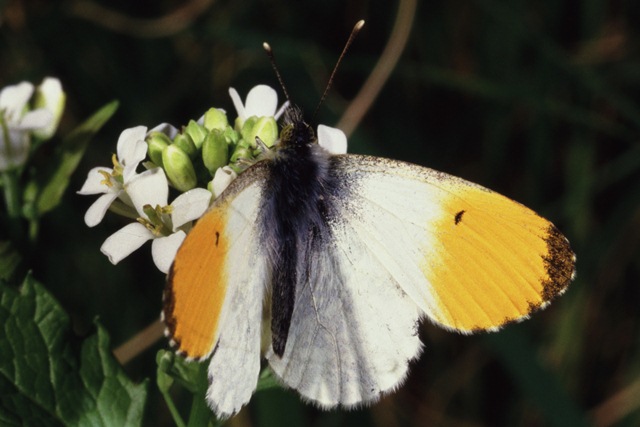 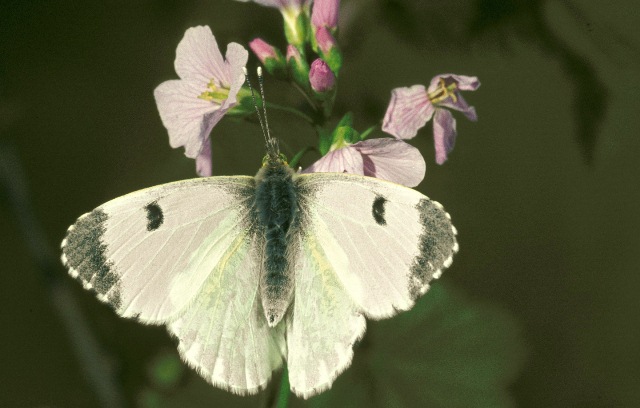 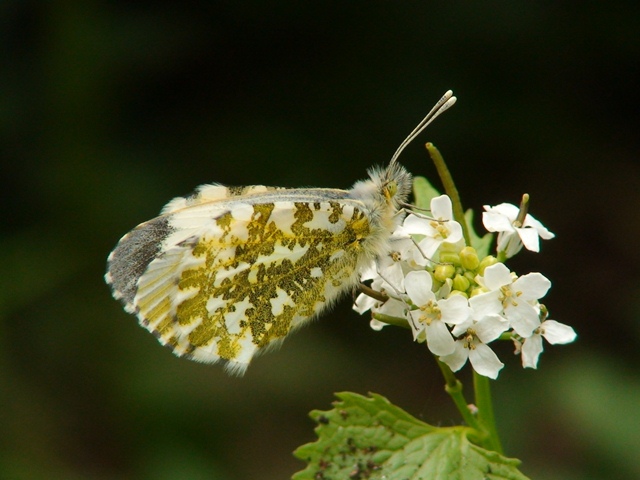
Photographs: Frits Bink ©.
Medium sized, wing length 20 (17-23) mm. The species occurs in all countries of the Benelux, most frequent in woodland and hedgerow landscape, but also locally in the dunes and marshes.
Butterfly is on the wing in the Benelux from mid-April until mid-June and peaks mid-May. In Europe the species is known from the taiga in the north to the oak woods in the south, thus a great variety of climate ranging from Boreal to Mediterranean and from maritime to severe continental, amplitudes 5 to 20. The required heat sum is 300°d and the maximum tolerated 2000°d, corresponding with climate windows from 18 weeks and 38 weeks.
The larvae of this species grow fast and in less than seven weeks they can complete their lifecycle. In the Mediterranean climate they have at least 30 weeks available to produce further generations; however, the larvae depend on young pods for their food and young pods are only available in the springtime.
Ecological characteristics
Behaviour over time
Overwintering: pupa attached to a stalk of a herb, close to the ground.
Reproduction: oviposition starts after 2-3 days, the body contains than 36 (30-42) eggs. Observed potential is 4.6 times as much, in the beginning the female may produce 29 (20-38) eggs per day.
Larval feeding periods: two to three weeks in the period from early-May until early-July.
Generations: always one.
Spreading of risk: in pupal stage up to one month spread in the time of hatching, also the diapause may continue for another year.
Life cycle: egg 5 (3-10) days; larva 16 (11-34) days; pupa 46-49 weeks, sometimes a year longer.
Life span of adult: short, 2 weeks.
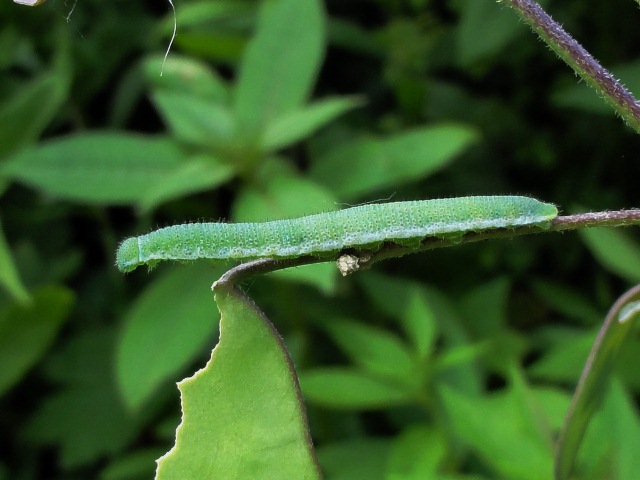 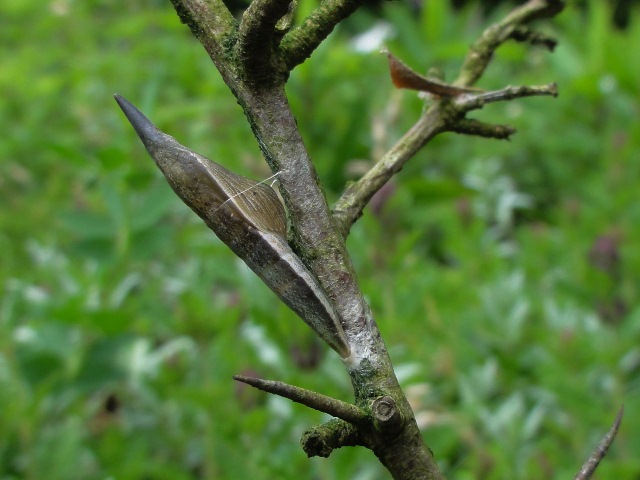
Photographs: Rosita Moenen ©.
Behaviour in space
From stay-at-home to migrant: both a nomadic and a stay-at-home life style has been observed.
Finding a mate: male patrols along edges of wood or shrub or perches on a spot in the grass vegetation.
Orientation in the landscape: edge structures such as wood edges are preferred.
Oviposition: buds, flowers and young seedpods of the host-plant.
Defence
Threats from other organisms: butterflies are ignored by birds; larvae and pupae are well camouflaged. In rearing experiments larvae have been shown to be susceptible to virus disease and die in the pupal stage.
Threats from the environment: during diapause heat, cold and draught can be tolerated.
Feeding habits
Adult: nectar, prefers flowers of own host like garlic mustard, cuckoo flower, hairy rock-cress.
Larva: feeds on the very young pods, is able to feed on mature leaves when nearly full grown.
Larval foodplants
Plant species: Brassicaceae, e.g. Alliaria petiolata, Arabis glabra, A. hirsuta, Cardamines amara, C. pratensis, Lunaria annua and Nasturtium officinale.
Journal
Rearing experiments.
1. Based on material from Ethe, Belgium:
23 May 1985: eggs collected.
25 May: eggs hatched.
30 May: larvae in moult L2-3, some already in L3.
6 June: larvae full grown.
9 June: first one pupated.
2. Based on material from the Netherlands, Leersum:
16 May 1986: female in copula collected.
18 May: 60 eggs laid, 27 were orange, 33 white.
19 May: all eggs had their final orange colour.
21 May: first eggs hatched.
28 May: biggest larvae in moult L3-4.
9 June: two larvae already pupated.
Table 24-1. Results of dissections

Table 24-1a. Oviposition sequence

Table 24-2. Collection and observation localities
B, Ethe, 240 m, 49° 36’ 25”N – 5° 35’ 50”E; 29 May 1966, 19 June 1983, 11 July 1984, 23 May 1985.
B, Torgny 237 m, 49° 30’ 40”N – 5° 29’ 04”E; 19 June 1983.
D, Blankenheim 50° 22’ 40”N – 6° 41’ 05”E; 20 June 1983.
D, Kaub 50° 05’ 36”N – 7° 45’ 43”E; 26 May1986.
D, Lorch 300 m, 50° 02’ 05”N – 7° 47’ 56”E; 26 May 86.
F, Vosges, Bollenberg 363 m, 47° 56’ 54”N – 7° 15’ 21”E; 11 June 1984.
F, Walbach, 350 m, 48° 05’ 04”N – 7° 13’ 22”E; 9 May 1981.
NL, Amerongen, garden, 52° 00’ 01”N – 5° 27’ 34”E; 1975-1986.
NL, Bennekom, garden, 51° 59’ 30”N – 5° 40’ 34”E; 1988-2014.
NL, Leersum, garden, 52° 00’ 29”N – 5° 24’ 04”E; 1975-1986.
Fig. 24-1. Anthocharis cardamines, phenogram adapted from Fichefet et al. 2008: 71.

Fig. 24-2. Anthocharis cardamines, habitat characteristics.

Fig. 24-3. Anthocharis cardamines, climate matrix, heat-sums 300 - 2000°d.
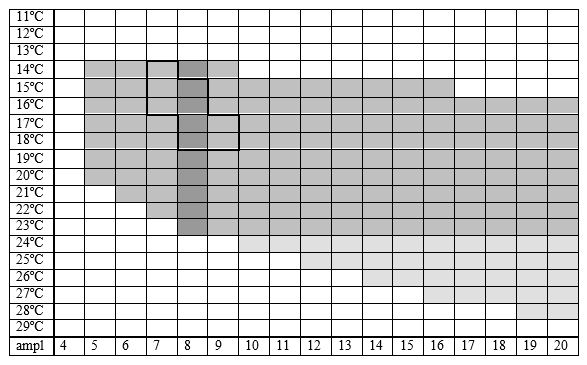
|











